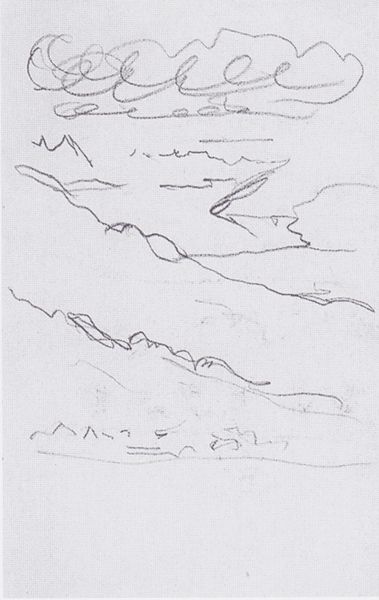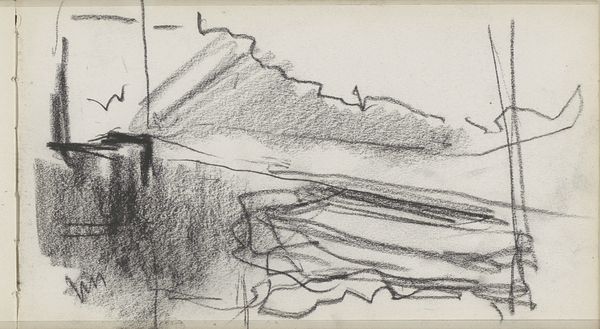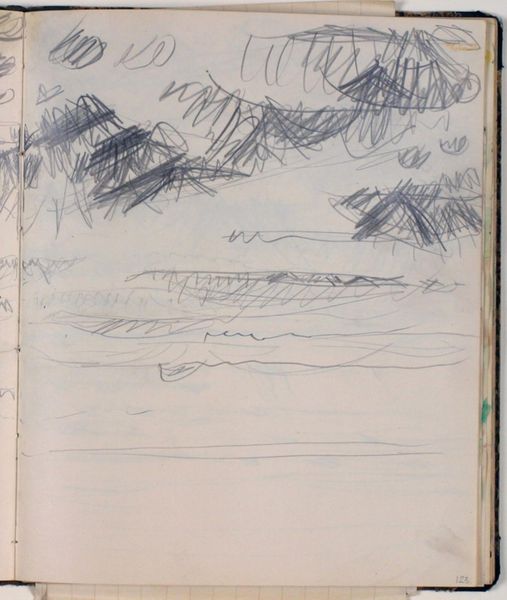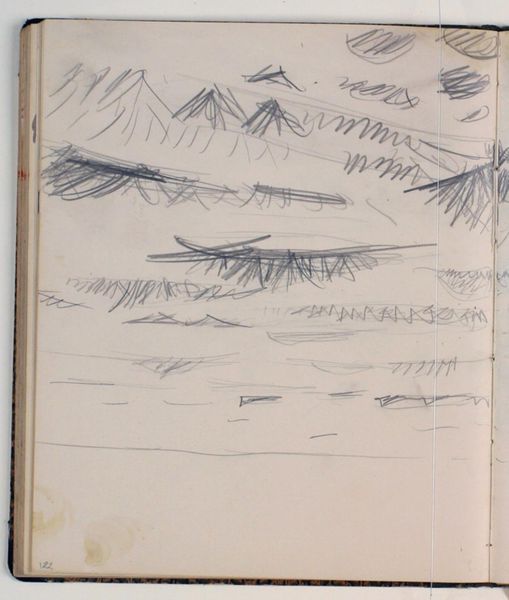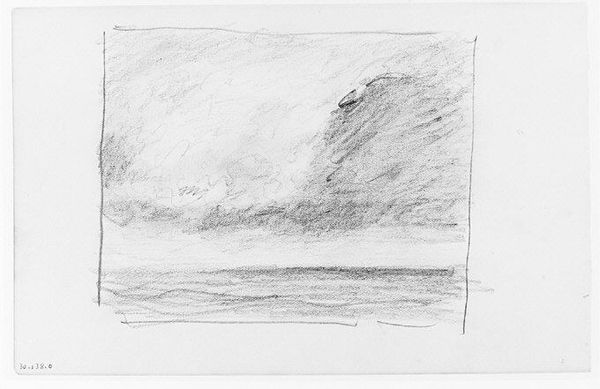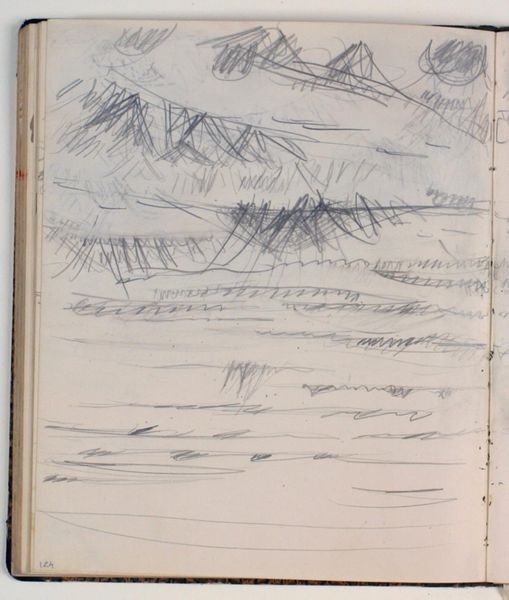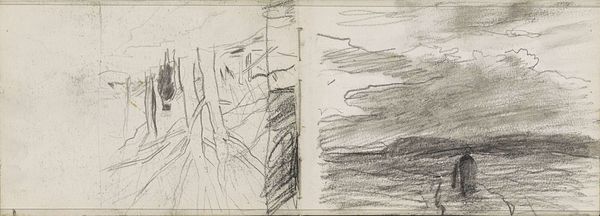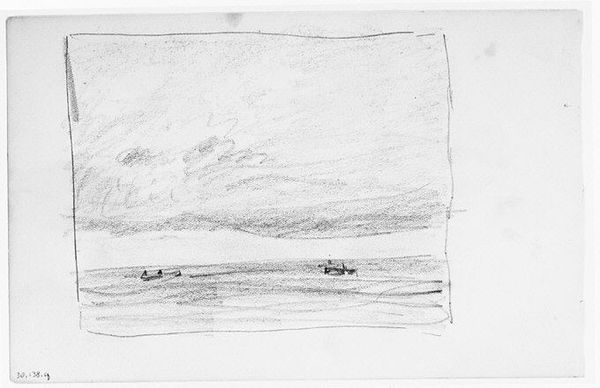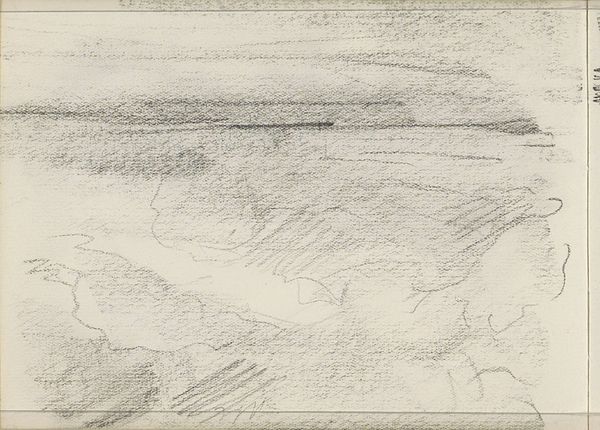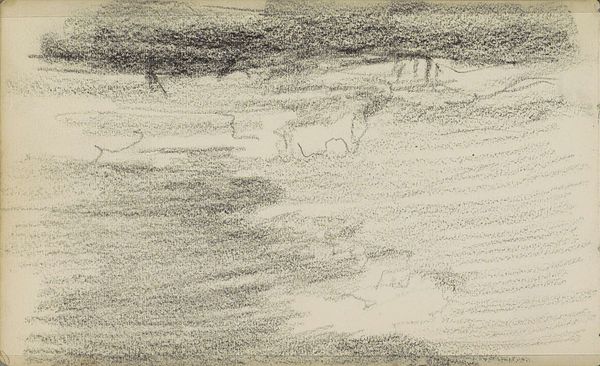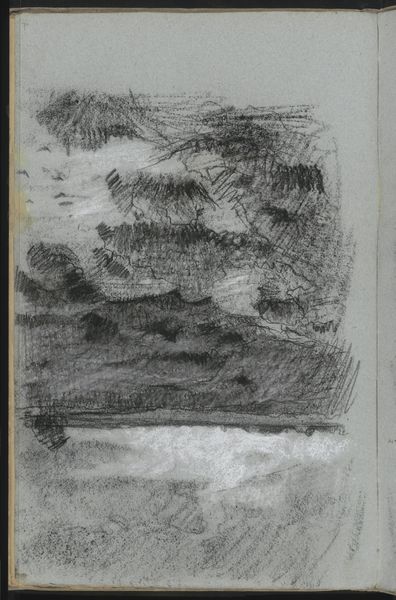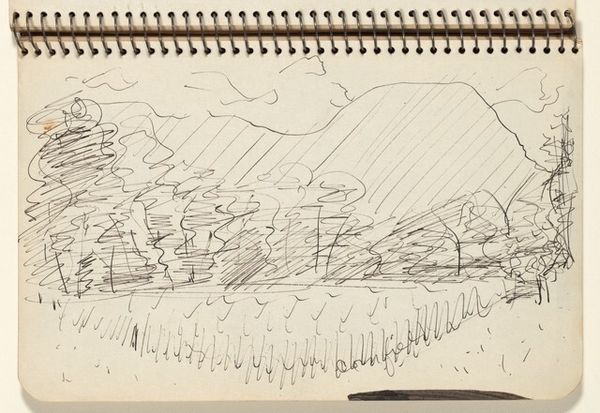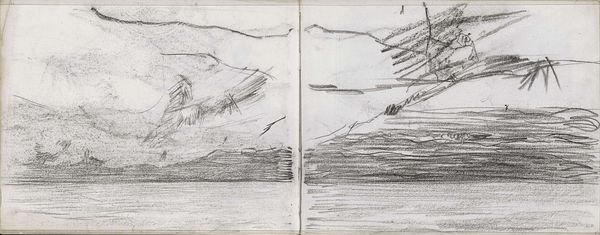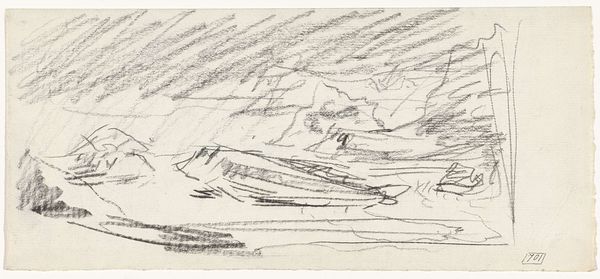
Copyright: Public domain
Editor: This is Ferdinand Hodler's 1908 pencil drawing, "Lake Thun from the path to the plate Schynigen." The composition strikes me as interesting, because it features three distinct, stacked views of the same landscape, each rendered slightly differently. How do you interpret this work? Curator: Hodler, working at the dawn of the 20th century, was deeply engaged with questions of national identity and the construction of Swissness. The panoramic vista, especially of a landscape so quintessentially Swiss, is no accident. Think about the ways in which idealized landscapes were—and still are—used to forge collective identities. Do you see this potentially in this sketch? Editor: That's a fascinating perspective. I was focused on the composition itself, but your comment makes me think about how landscapes have been used to construct ideas of nationhood. The multiple perspectives feel almost like variations on a theme, a visual exploration of different ways to see and therefore know the landscape. Curator: Exactly. Consider the social and political context of Hodler’s time. There was a strong desire to define and celebrate Swiss identity. Hodler was searching for an authentically Swiss visual language, something rooted in but transcending academic tradition. What if the different layers here showcase the different cultural roles attributed to landscapes, from leisure destination, to commodity, to untouched natural scenery? Editor: So it's not just a landscape; it’s an assertion of cultural identity through the portrayal of the land? I never considered how political even a landscape sketch could be. Curator: Absolutely. Hodler encourages us to question how visual culture shapes our understanding and experience of the world, reminding us that even a seemingly simple drawing can be a powerful act of cultural affirmation, layered with political and social significance. Editor: Thank you for providing context; I appreciate seeing how we can see national identity encoded in the land itself, influencing the interpretation of the artist's visual language. Curator: And thank you, this work provides great opportunities to engage with both art history and contemporary theory.
Comments
No comments
Be the first to comment and join the conversation on the ultimate creative platform.
